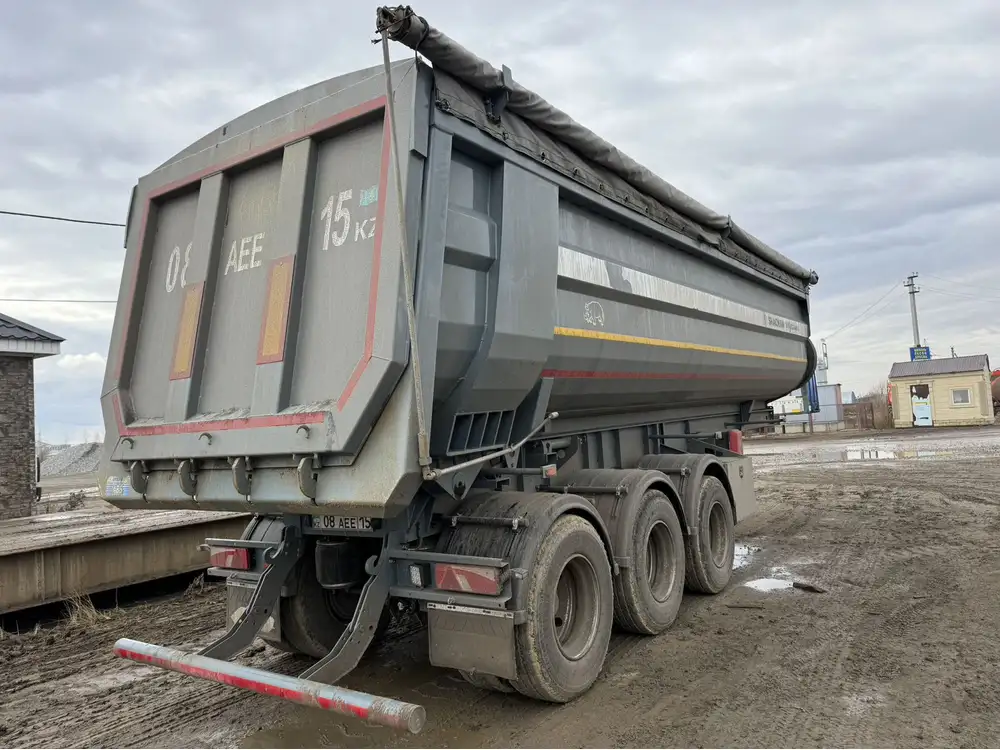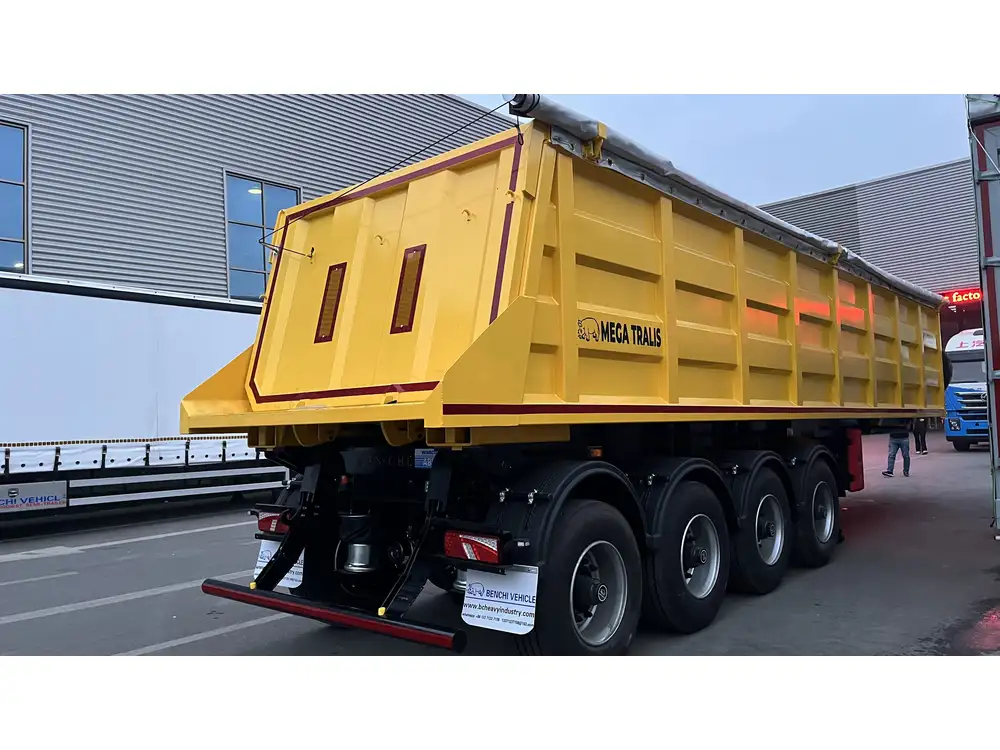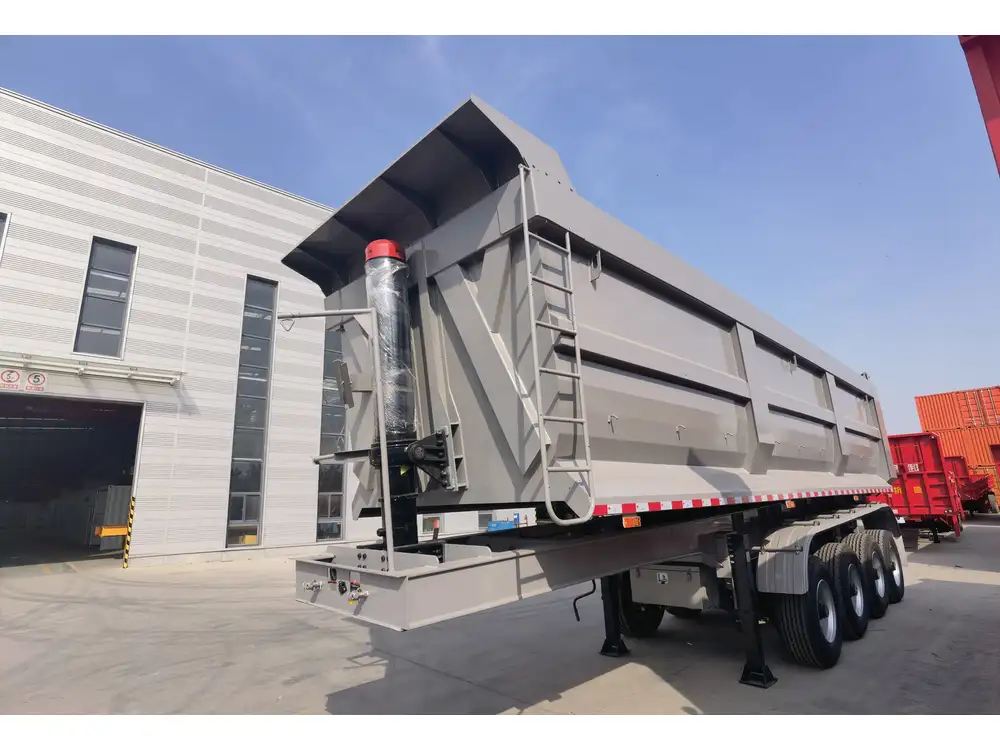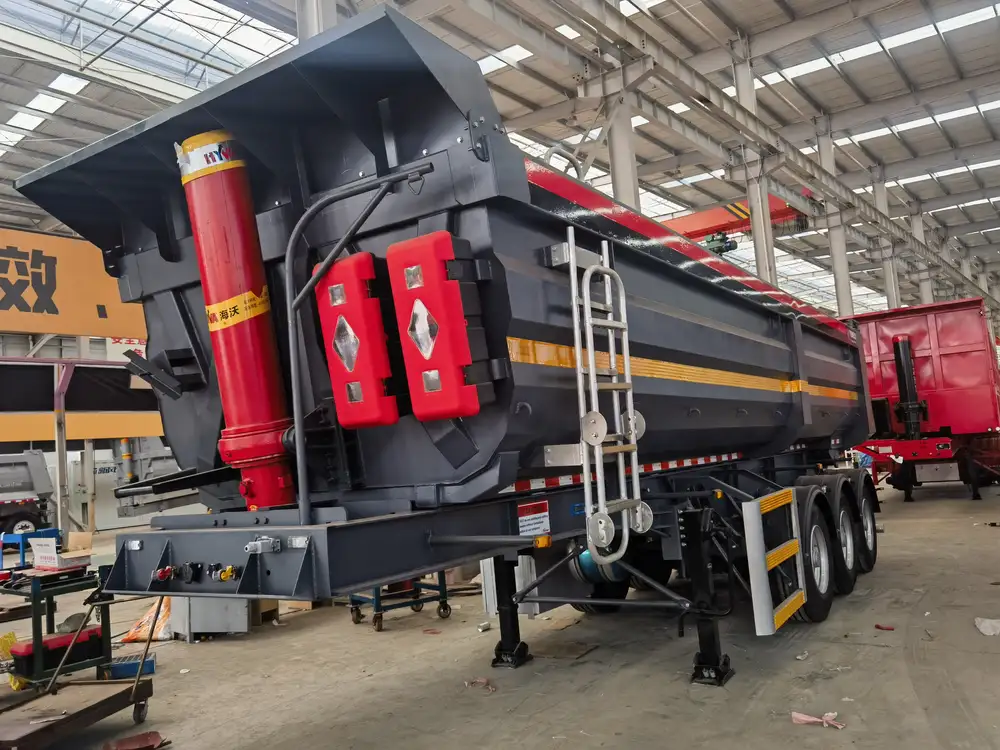In the vast landscape of transportation logistics, semi-trailer trucks play a pivotal role in the movement of goods across long distances. Understanding their specifications, particularly their dimensions, is crucial for various stakeholders, including logistics companies, manufacturers, and regulatory bodies. This in-depth exploration focuses on one core element: the height of semi-trailer trucks.
Semi-Trailer Trucks Defined
Before delving into the specifics of truck height, it’s essential to clarify what a semi-trailer truck is. A semi-trailer truck, or articulated truck, consists of a towing engine (commonly referred to as a tractor) and a semi-trailer that carries the cargo. Unlike a full trailer, a semi-trailer is supported at the rear by its own wheels while being attached to the tractor via a fifth wheel coupling.
Key Components of a Semi-Trailer Truck
| Component | Description |
|---|---|
| Tractor Unit | The front part that provides the engine and driving capabilities |
| Semi-Trailer | The cargo-carrying unit that can vary in length and type of cargo capacity |
| Fifth Wheel | A metal plate and coupling device that links the trailer to the tractor |
| Axles | Support devices that bear the weight of the trailer, usually between 2-5 axles |

Height Specifications of Semi-Trailer Trucks
When discussing the height of semi-trailer trucks, several factors come into play, including regulatory standards, types of trailers, and the overall design of the trucks themselves.
Standard Height Measurements
The average height of semi-trailer trucks typically ranges from 13.5 feet (approximately 4.1 meters) to 14.5 feet (approx. 4.4 meters). This measurement includes the tractor and the attached semi-trailer. The specific height varies based on the vehicle type and configuration.
Breakdown by Trailer Type
Flatbed Trailers
- Average Height: 13.5 to 14.0 feet (approximately 4.1 to 4.3 meters)
- Description: Used primarily for transporting oversized goods, flatbed trailers have minimal clearance due to their design.
Dry Van Trailers
- Average Height: 13.5 to 14.5 feet (approximately 4.1 to 4.4 meters)
- Description: Enclosed trailers that provide protection against weather and theft, typically used for non-perishable goods.
Refrigerated Trailers (Reefers)
- Average Height: 13.5 to 14.5 feet (approximately 4.1 to 4.4 meters)
- Description: These trailers require extra height to accommodate refrigeration units, usually reaching the upper range.
Tanker Trailers
- Average Height: 13.5 to 14.0 feet (approximately 4.1 to 4.3 meters)
- Description: Used for transporting liquids, these trailers vary slightly in height depending on their design and capacity.
| Trailer Type | Average Height (feet) | Usage |
|---|---|---|
| Flatbed Trailers | 13.5 – 14.0 | Transport oversized goods |
| Dry Van Trailers | 13.5 – 14.5 | Non-perishable goods |
| Refrigerated Trailers | 13.5 – 14.5 | Perishable goods |
| Tanker Trailers | 13.5 – 14.0 | Liquid transport |

Factors Influencing the Height of Semi-Trailer Trucks
Height can vary drastically based on multiple considerations, some of which include:
1. Federal and State Regulations
Regulatory compliance is a critical aspect of semi-trailer truck dimensions. In the United States, the Federal Highway Administration stipulates that the maximum allowable height for commercial trucks is 13.5 feet. Certain states may have specific allowances, leading to variations.
2. Cargo and Loading Requirements
Different types of cargo necessitate various semi-trailer configurations. For instance, specialized trailers designed for oversized loads or particular equipment may have elevated heights to accommodate these demands.

3. Tire and Suspension Systems
The type of tire and suspension system impacts the overall height of the truck. Choosing different tire sizes and suspension setups can raise or lower the vehicle to meet specific requirements.
4. Aerodynamic Features
Modern semi-trailer trucks incorporate advanced aerodynamic designs aimed at reducing drag and increasing fuel efficiency. These features can lead to height adjustments based on the contour of the trailer.
The Impact of Height on Operations

1. Accessibility and Maneuverability
The height of a semi-trailer truck directly affects its ability to navigate under bridges, tunnels, and other overpasses. Logistic companies must ensure that their routes accommodate the vehicle’s height to prevent accidents and costly delays.
2. Loading Dock Compatibility
When transporting goods to various retail or commercial facilities, the height of a semi-trailer can hinder access to certain loading docks. Compatibility considerations must be part of route planning to ensure efficient operations.
3. Wind Resistance and Stability
A taller semi-trailer may experience increased wind resistance, impacting fuel efficiency and vehicle stability, especially in adverse weather. Lowering the trailer height can enhance stability and reduce fuel consumption.

Measuring the Height of Semi-Trailer Trucks
Understanding how to accurately measure the height of a semi-trailer truck is crucial for compliance and operational safety. The process involves several critical steps:
1. Tools Needed
- Measuring tape that exceeds the height of the truck
- Leveling device (optional but recommended for precision)
2. Steps for Measurement
- Ensure the truck is parked on a flat and level surface.
- Measure from the ground to the highest point of the trailer. This should include any protruding components like refrigeration units or raised sections.
- Repeat the measurement at a few different locations to ensure consistency.
| Measurement Steps | Details |
|---|---|
| Ensure Flat Surface | Parking the truck on level ground is crucial to accurate measurement |
| Measure from Ground Level | Distance from the ground to the highest point should be carefully recorded |
| Consistency Check | Multiple measurements will help confirm accuracy |

Height Constraints Around the World
1. United States Regulations
In the United States, federal law sets the maximum height allowance for commercial vehicles at 13.5 feet, with some states permitting up to 14 feet for specific vehicles under special conditions.
2. European Union Standards
In the European Union, regulations are slightly different; the standard height limit is 4 meters (approximately 13.12 feet), with some exceptions for specialized vehicles.

3. International Regulations
While many countries adopt similar standards, variations exist. For instance, Australia allows heights of up to 14.6 feet for some vehicle configurations.
| Region | Maximum Height (feet) | Notes |
|---|---|---|
| United States | 13.5 – 14.0 | Federal regulations apply |
| European Union | 13.12 (4 meters) | Standard for EU compliance |
| Australia | Up to 14.6 | Depends on vehicle configuration |
Conclusion
In summary, the height of semi-trailer trucks is a significant consideration that impacts operational efficiency within the transport logistics sector. With average heights ranging from 13.5 to 14.5 feet, variations exist based on trailer type, regulatory standards, and cargo requirements. Understanding these specifications facilitates better route planning, compliance with regulations, and ultimately enhances service delivery in the logistics and transportation industry.
Equipped with a comprehensive understanding of the specifics surrounding semi-trailer truck heights, stakeholders can better navigate the demands and challenges inherent in the transportation industry, ensuring optimal performance and adherence to standards.
Further Reading and Resources
- Federal Highway Administration – Commercial Vehicle Size and Weight
- European Commission – EU Transport Policy
- National Safety Council – Truck and Bus Regulations
For more information regarding the specific requirements for your operations, consider consulting various transportation regulatory resources or contacting industry professionals to ensure compliance and optimal efficiency.



